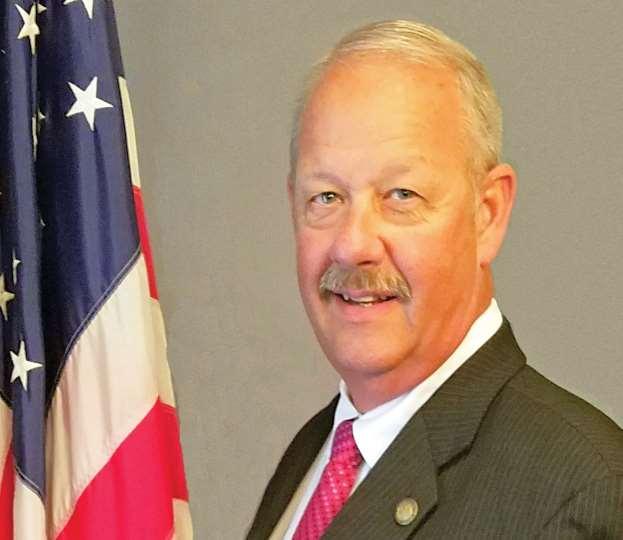



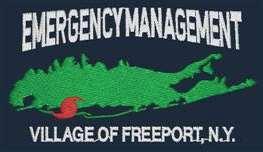
Areyouprepared forwhenthatunexpected emergencystrikes? Snow-Ice-Flooding-Fire-Heat-Hurricanes Doyouhaveafamilyplan? AreyoureceivingROBOCalls? TheIncorporatedVillageofFreeport EmergencyManagementTeam AnnualNewsletter MayorRobertT.Kennedy BoardofTrustees DeputyMayorRonaldJ.Ellerbe Trustee’sEvetteSanchez,JorgeA.MartinezandChristopherSqueri FreeportEmergencyManagementOffice andthe FreeportBuildingDepartment
ARE YOU PREPARED FOR AN UNEXPECTED EMERGENCY?
Freeport, a coastal community, is highly susceptible to Hurricanes, Nor’easters and strong winter storms.The severe damage from the impact of strong winds, storm surges, floods, tornados, and riptides present several potential risks to your personal property and life. Being prepared for natural or man-made disasters that can strike without warning is crucial.Along with your planning ahead, monitoring weather conditions and sending out the appropriate mass notifications to keep Freeport residents safe and informed is the responsibility of Freeport’s Emergency ManagementTeam.
Disasters can strike quickly and without warning, forcing you to evacuate your neighborhood, workplace, school, or home. If you were confined to any of these places, what would you do if your basic services— water, gas, electricity or telephones—were cut off?Although local officials and relief workers will be readily available, they may not be able to reach everyone right away. When it comes to being prepared before a disaster crisis hits, all residents are encouraged to have a Family Emergency Plan and Disaster Supply Kit available for immediate use. Your kit should have enough supplies to last at least 5 to 7 days for each family member.
Everyone shares a responsibility to prevent casualties and minimize damage.
This guide contains necessary information regarding actions that should be taken during an emergency to protect your family, property, and yourself.The first step in this process is getting the information to get prepared. Disaster Preparedness includes:
• Signing up for the Village of Freeport ROBO calls so you receive vital emergency information by phone to keep your family safe.
• Developing a Family Plan
• Creating a Disaster Supply Kit
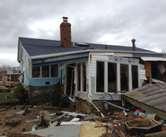
• Having a Place to go
• Securing your Home
• Having a Pet Plan
• Reviewing Online Vulnerability Information
IMPORTANT PHONE NUMBERS
Emergency Management Hotline
(516) 377-2400
Freeport Emergency Management (516) 377-2188
Freeport Fire Department (516) 378-0400
Freeport Police Dept Business (516) 378-0700
Freeport Police Dept Emergency 911
Freeport Electric Dept Emergency (516) 378-0146
Freeport Building Department (516) 377-2243
Freeport Water and Sewer Services
(516) 377-2379
Freeport Water and Sewer off hours (516) 377-0700
American Red Cross in Nassau County (516) 747-3500
National Grid 24-hour Emergency 1-800-490-0045
WARNING SIRENS & RADIO
The Village’s Siren system is the primary method of emergency notification to the residents of Freeport. They will be used for any emergency, natural or man-made, that requires immediate notification to Village residents.
Sirens sound for one of three reasons:
12 noon on Saturdays - weekly test
Top of each hour - an emergency notification is going out to residents.All residents should call the Emergency Management Hotline at 377-2400 or tune their radios to 1690AM for Important information.
Every 10 minutes - an emergency evacuation is in progress. Listen to officials, and if you are told to evacuate, do so immediately for your own safety.
Freeport’s Weather and Emergency Notification
RADIO STATION 1690AM
The Village of Freeport now has its ownAM radio station broadcasting from our Emergency Operations Center.The station broadcasts weather 24 hours a day, 7 days a week.All residents are encouraged to familiarize themselves with this station. The Freeport Emergency ManagementTeam will send out pre-recorded Emergency Notifications on this station when necessary and also has the capability to broadcast live. When the Village’s Emergency Sirens sound at the top of the hour, turn to this station for important emergency notifications.
ARE YOU RECEIVING ROBO CALLS ?
Sign up to receive emergency alerts that could directly impact your family

The Emergency Management Office is using the Civic Ready Robo Call syatem for notification of pending or existing emergency situations.The system will call only the geographic area in the Village needing the notification. Emergency alerts can be sent via text message, email, or voice mail, based on your preferences, on several phone lines. It is important that we collect your contact information because many households no longer utilize traditional land-based telephone lines.
The system is intended to be used for emergency alerts, as well as non-emergency incidents that may have significant impacts to residents. EmergencyAlerts could be related to specific hazards that require some kind of action be taken such as street flooding, evacuation, shelter in place, boil water orders, etc. Non-emergency alerts could include significant transportation problems with prolonged impacts or significant ongoing police or fire activity.This list is not meant to be all inclusive, and demonstrates that this system will not be used for routine information. Residents can receive alerts on land line phones and their cell phones. Adding your address will allow tailoring so you do not receive alerts that don’t pertain to your geographical area. These alerts are provided free of charge, however standard text messaging rates and other charges may apply.
If you wish to subscribe to Emergency SMS text messages only, text Freeport to 38276.
You can also receive Freeport alerts on a MobileApp, the “MyAlert”App can be found at the following 2 locations:
https://apps.apple.com/us/app/alertsense-my-alerts/id1102847004
https://play.google.com/store/apps/details?id=com.AlertSense.PublicApp&pli=1
The Village is also requesting every resident and business, if you have not already done so, to complete the questionnaire on the following page and return it to the Village so that we can update our phone-listing database.All information will be kept strictly confidential. Additionally, if a person or business does not wish to be notified in an emergency, they can request that their phone number be removed from the database.
We are also looking for an emergency contact in the event of a problem at your residence or business and you are not at that location. The emergency contact should have a key to the location and know any alarm codes.
Residents are requested to visit the Village’s website at www.freeportny.gov/720/CivicReady-Emergency-Notification and fill out the “Civic Ready Emergency Notification” form. This is the quickest way for residents to change your information on file.
EMERGENCY INFORMATION FORM
Resident or Business Locations Information
Address ______________________________________________________________
Resident or Business Name ________________________________________________
Locations Phone Number ___________________
Cell Number of Occupant _____________________
E-MailAddress ____________________________
Text messaging number and Provider _____________________________
Are there people with special needs at this location? Yes [ ] No [ ]
If yes, explain ___________________________________________________________
Are there any special hazards at this location, i.e. dangerous dog, hazardous materials, etc
Yes [ ] No [ ] If yes, explain
Emergency Contact:
Name ______________________________________
Phone Number ______________________________
Do they have access to residence? Yes [ ] No [ ]
Please mail this form to Freeport Emergency Management 76 Church St, Freeport, NY 11520 or FAX to 888-339-5624 or email to drowan@freeportny.gov
For additional info call Freeport’s Office of Emergency Management at 516-377-2188
FAMILY DISASTER PLAN
• Discuss the type of hazards that could affect your family. Know your home’s vulnerability to storm surge, flooding and wind.
• Locate a safe room or the safest areas in your home for hurricane or tornado hazards. In certain circumstances the safest areas may not be your home but at other locations within yourcommunity.
• Determine escape routes from your home and places to meet.These should be measured in tens of miles rather than hundreds of miles.
• Have an out-of-state friend as a family contact, so all your family members have a single point of contact.
• Make a plan now for what to do with your pets if you need to evacuate.
• Post emergency telephone numbers by your phones and make sure your
• children know how and when to call911.
• Check your insurance coverage - flood damage is not usually covered by homeowners insurance.
• Stock non-perishable emergency supplies and a DisasterSupply Kit.
• Use a battery powered NOAAweather radio. Remember to replace its battery every 6 months, as you do with your smoke detectors.
• Take FirstAid, CPR, and disaster preparedness classes.
• Check emergency equipment, such as flashlights, generators, first aid kits, and cell phones.

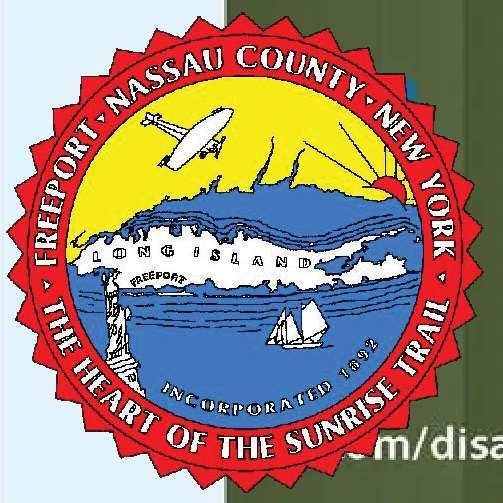
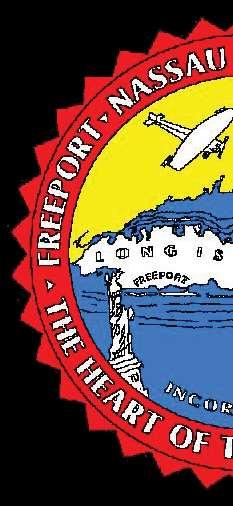







DISASTER SUPPLY KIT
• Water - at least 1 gallon daily per person for 5 to 7 days
• Food - enough for 3 to 7 days
— non-perishable packaged or canned food and juices
— foods for infants or the elderly
— snack foods
— non-electric can opener, cooking tools, fuel
— paper plates, plastic utensils
• Blankets, Pillows, etc.
• Clothing - seasonal rain gear and sturdy shoes
•
FirstAid Kit, Medicines and Prescription Drugs
•
Special Items - for babies and the elderly
•
Toiletries, Hygiene items and Moisture wipes
•
Flashlight, Batteries and Radio - Battery operated with NOAAweather radio
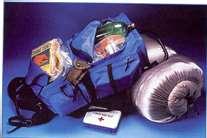
• Telephones - Fully charged cell phone with extra battery
• Cash (with some small bills) and Credit Cards - Banks andATMs may not be available for extended periods
• Keys
• Toys, Books, and Games
• Important documents - in a waterproof container or watertight resealable plastic bag. Insurance, medical records, bank account numbers, Social Security card, up to date photographs, etc.
• Tools - keep a set with you during the storm
• Pet care items
• Vehicle fuel tanks
DO YOU HAVE A PLAN FOR EVACUATION?
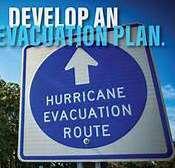
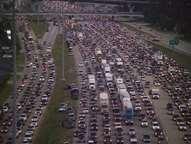
If you are asked to evacuate, you should do so without delay.
The two Evacuation Routes for Freeport that have been established by Nassau County Emergency Management are Northbound via GrandAve in Baldwin and the Meadowbrook Parkway. However with the residents of the barrier islands using the same evacuation routes, these roadways will be very congested with traffic. That means it is important for you and your family to have an EVACUATION PLAN to get to a safe shelter as quickly as possible.
You should also have a PLAN if you don’t have time to evacuate and need to shelter in place.This plan should make you as safe as possible in your home. Using modifications to strengthen your home against storms and stocking medical, food, and water supplies are essential recommendations to include in your Disaster Prevention Plan.The suggestions provided here are guidelines that should not outweigh your common sense.
ONLINE VULNERABILITYINFORMATION
In 2012 Hurricane Sandy prompted Freeport to order the evacuation of Freeport residents living south of Merrick Road. Those that did not leave were in grave danger. Many people had to be rescued from their homes as flood waters rose while many could notbe reached. Residents had to sit and hope the water would stop rising.
HAVE A PLACE TO GO
Develop a family disaster preparedness plan before an actual event threatens your area. If your family disaster preparedness plan includes evacuation to a safer location for any reason, then it is important to consider the following points:
If ordered to evacuate, do not wait or delay your departure. If possible, leave before local officials issue an evacuation order for your area. Even a slight delay in starting your evacuation will result in significantly longer travel times as traffic congestion worsens.The designated evacuation routes for Freeport are GrandAve in Baldwin and the Meadowbrook Parkway
Select an evacuation destination that is nearest to your home and minimize the distance over which you must travel in order to reach your intended shelter location.
In choosing yourdestination, keep in mind that the hotels and other sheltering options in Nassau County are likely to be filled very quickly in a large evacuation event.
If you decide to evacuate to another county or region, be prepared to wait in traffic.
The large number of people in this state who must evacuate during a disaster will probably cause massive delays and major congestion along most designated evacuation routes; the larger the event, the greater the probability of traffic jams and extended travel times. If possible, make arrangements to stay with the friend or relative who resides closest to your home and who will not have to evacuate. Discuss with your intended host the details of your family evacuation plan now!
If a hotel or motel is your final intended destination during an evacuation, make reservations before you leave. Most hotel and motels will fill quickly once evacuations begin. Find Pet-Friendly hotels and motels.
If you are unable to stay with friends or family and no hotels/motels rooms are available, then as a last resort go to a shelter. Remember, shelters are not designed for comfort and do not usually accept pets. Bring your disaster supply kit with you to the shelter.
Make sure that you fill up your car with gas before you leave.
PET PLAN
Contact your veterinarian or local humane society for information on preparing your pets for an emergency.
BEFORE THE DISASTER
•Make sure that your pets are current on their vaccinations. Pet shelters may require proof of vaccines.

•Have a current photograph
If you plan to shelter your petwork it into your Evacuation
Route Planning
DURING THE DISASTER
• Animals brought to a pet shelter are required to have: Proper identification collar and rabies tag, proper identification on all belongings, a carrier or cage, a leash, an ample supply of food, water and food bowls, any neces sary medications, specific care instructions and newspapers or trash bags for clean-up.
• Bring pets indoor well in advance of a storm - reassure them and remain calm.
• Pet shelters will be filled on first come, first served basis. Callahead and determine availability.

PET DISASTER SUPPLYKIT
• Proper identification including immunization records. Tape a copy of the animal’s records to their carrier or cage.

•Ample supply of food and water
•Acarrier or cage
• Medications
• Muzzle, collar and leash
RETROFITTING YOUR HOME
The most important precaution you can take to reduce damage to your home and property is to protect the areas where wind can enter.According to recent wind technology research, it’s important to strengthen the exterior of your house so wind and debris do not tear large openings in it.You can do this by protecting and reinforcing these five critical areas:
ROOF - STRAPS - SHUTTERS - DOORS - GARAGE DOORS
Agreat time to start securing - or retrofitting - your house is when you are making other improvements or adding an addition.
Remember: Building Codes reflect the lessons experts have learned from past catastrophes. Contact the Freeport Building Department at (516) 377-2241 to find out what requirements are necessary for your home improvement projects.
Roof to Top of Wall Connection
Metal hurricane straps or clips provide the proper measure of strength and safety for the roof-to-wall connection.The common practice of toenailing the trusses or rafters often is not sufficient to hold a roof in place in high winds. These clips or straps are usually very difficult to see from the attic because of insulation.

FREEPORT BUILDING DEPARTMENT
Members of the Building Department have been specially trained at the Federal Emergency Institute on methods of retrofitting existing property from floodwater and wind damage. If you have any questions or concerns about your property, or for more details, please contact the Building Department at (516) 377-2241 or buildingdept@freeportny.gov.
The Freeport Memorial Library reference desk also offers information and reference material on retrofitting, how to read a flood map or a flood insurance rate map, and other FEMApublications.
PROTECTING YOUR PROPERTY
PROTECTING YOUR PROPERTY
Many homes in the frequently flooded areas can be elevated so that the lowest floor is raised above the flood protection level. Freeport’s Building Department will help you determine if this is feasible with your property. The staff will show you photos of homes that have been elevated (both large and small) and will provide a list of contractors experienced in the elevation of existing houses. Installation of floodwalls that are properly designed to resist water pressure and are of sufficient height can also decrease flood damage. This method works best where the floodwaters do not exceed 3 feet.
Dry flood proofing means sealing a building to keep floodwaters out. Walls are coated, openings such as windows, doors, etc. are closed permanently and can be temporarily sealed with removable shields or sandbags.
Wet flood proofing means modifying a building so that floodwaters will cause only minimal damage to the building and its contents.
Be sure the professional you hire to do your retrofitting project has experience in this type of work. Building permits must be obtained prior to beginning any work on the property.The National Flood Insurance Program (NFIP) requires that if the cost of reconstruction, rehabilitation, addition, or other improvements to a building equals or exceeds 50% of the building’s market value, then the building must meet the same construction requirements as a new structure. Substantially damaged buildings must also be brought up to the same standards, in other words, a residence damaged so that the cost of repairs equals or exceeds 50% of the building’s value before it was damaged must be elevated above the base flood elevation.
FLOOD INSURANCE PROTECTION
This outreach project is part of the program that has granted Freeport residents a discount on flood insurance.The current discount for property owners has been increased to 15%. If you are not carrying flood insurance, speak to your insurance agent.Yourregular homeowners insurance policy will not cover damage from floods. However, because Freeport participates in the National Flood Insurance Program, you may purchase a separate flood insurance policy.This insurance is backed by the federal government and is available to everyone. If you have a mortgageAND ARE INAFLOOD ZONE, you must have this insurance. For flood map information, contact the Freeport Building Department at (516) 377-2241.
IS MY PROPERTY IN THE FLOOD ZONE?
This map shows the section of Freeport that has been designated a special flood hazard area by the Federal Emergency ManagementAgency. If you live in this area, you are probably aware of the threat of flooding during various weather conditions, as wellas the phases of the moon and the tides.
If you live in the flood zone and have never experienced a major flood, please take note of these important suggestions. Weather experts are predicting major storms as strong if not stronger then Sandy in the future. Sandy did bring flood waters to areas as far north as Merrick Road. In addition, computer predictions indicate that a storm surge during a major event could force flood waters even further north.
If you require information regarding yourspecific flood zone, the base flood information (BFE), whether your property is in a LIMWA(Line of Moderate Wave Action), flood depths, or if need to know if you are in a repetitive loss area, contact the Freeport Building Department.
Building Department personnelare available to assist you during business hours, 8:30 a.m. to 4:30 p.m.They will help you with permit requirements, map determinations, lowest level requirements, site visits and plan reviews to help you reduce the risk of flood damage to your property.
What You Can Do To Help Prevent Flooding
The Village’s street drainage system is maintained by the Department of Public Works. Please report any kind of dumping orother conditions that are interfering with the proper functioning of this system. Violators may face fines up to $1,000. If your property is located near a storm drain, make sure that it is not clogged with leaves and other debris. The roads and streets will not drain properly if these drains are clogged.
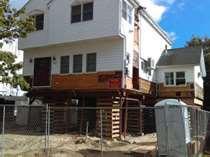
National Flood Insurance Program 1-888-CALL-FLOOD ext. 445, TDD# 1-800-427-5593.
Note: Superstorm Sandy exceeded this existing flood map by hundreds of feet. Just because you are not in the colored area you still should think about getting flood insurance.

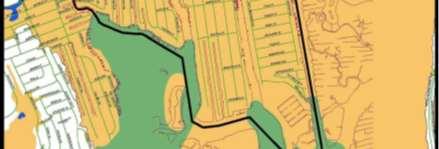
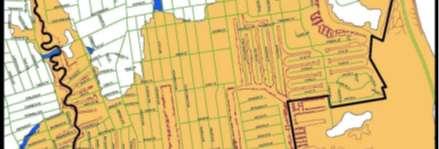
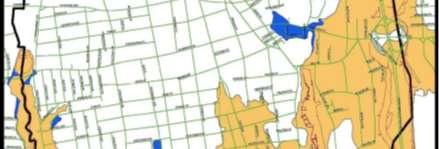
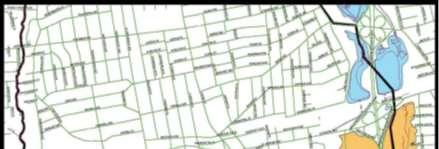
COMMUNITY RATING SYSTEM (CRS)
Freeport Building Department in conjunction with the National Flood Insurance community rating system saves residents approximately 15% on current insurance premiums.
Total of $951,303.00 saved by Village residents or $281.11 each policy!
The National Flood Insurance Program’s (NFIP) Community Rating System (CRS) is a voluntary incentive program that recognizes and encourages community floodplain management activities that exceed the minimum NFIP requirements.
The process currently discounts flood insurance rates to reflect the reduced flood risk based upon the community meeting the three main goals of the CRS:
1.Reduce flood damage to insurable property;
2.Strengthen and support the insurance aspects of the NFIP; and
3.Encourage a comprehensive approach to floodplain management.
The Village of Freeport joined the CRS program in 1993. In 1999 the Village of Freeport was selected by FEMAas one of 23 communities throughout the country as a model community for its pro mitigation activities.At this time, there are 3,405 policies in Freeport. We have always taken an aggressive stance on mitigation by adopting more restrictive codes, outreach projects, drainage maintenance, and other programs.
The Freeport Building Department original rating was a Class 10.Allour efforts have upgraded our status to a Class 7. This Class 7 entitles our residents to a 15% reduction in their flood insurance rates.
FREEPORT’S TIDAL GAUGE
FREEPORT’S COASTALFLOOD MONITORING STATION 8516411
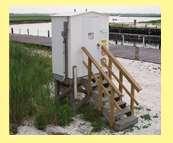
The coastal areas of Long Island and metropolitan NewYork are highly vulnerable to tidal flooding. Timely evacuation of people from flood-threatened areas in advance of approaching hurricanes and nor’easters requires adequate flood-warning time. The need for immediate information on coastal flooding has prompted the USGS, in partnership with the National Weather Service to establish a system of near real-time coastal flood- monitoring stations.The shelter at each coastal flood-monitoring site contains equipment that collects weather data such as precipitation, wind speed and direction, air and water temperature, relative humidity, and barometric pressure. Information collected at each monitoring site is automatically transmitted to the USGS office by telephone, satellite, or both. USGApersonnel visit each site regularly to verify the accuracy of data and maintain data collection and transmission equipment. Near real-time data collected at each coastal flood-monitoring station is available overthe internet. Freeport invested in our own station and residents can view Freeport tides online at:
https://waterdata.usgs.gov/monitoring-location/01310521/#parameterCode=62619&period=P7D&showMedian=true
This information could help speed the evacuation of flood threatened areas and minimize disruption in flood-spared communities. It also provides the ability to monitor storm-tide levels in near real-time, helps improve the accuracy of coastal flood predictions, and generates data at sea-level rise.
Operated by the U.S. GEOLOGICALSURVEY
in cooperation with the VILLAGE OF FREEPORT

HURRICANE PREPAREDNESS
TERMS TO KNOW
Tropical Storm Watch: Wind speeds of 39-73 mph or higher are expected within 36 hours.
Tropical Storm Warning: Wind speeds of 39-73 mph or higher are expected within 24 hours.
Hurricane Watch: Wind speeds of 74 mph or higher are expected within 36 hours.
Hurricane Warning: Wind speeds of 74 mph or higher are expected within 24 hours.
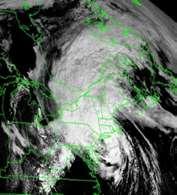
ACT NOW TO BE PREPARED
• Make arrangements now for elderly and others with special needs such as those on life support.
• Secure your boat before a hurricane warning is issued, check all cleats, ropes, chocks, and winches for strength. Make sure batteries for bilge pumps are fresh. Ensure lines are high enough on pilings to allow for extreme ebb and flow during the storm surge.
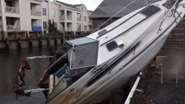
• Inventory personal property; safely secure all records and valuable documents in a watertight place.
• Plan what you will do with your pet.
• Have emergency cash or travelers checks saved.
• If your job requires you to work during a storm, make sure now that at least one adult will be with the children, elderly or those with special needs.
• Put together a family hurricane evacuation kit.
PREPARE FOR HIGH WINDS:
• Install Hurricane Shutters or precut 3/4” marine plywood for each window of your home. Install anchors for the plywood and predrillholes so that you can put itup quickly.There are also new clear films that you can have installed over your glass that will protect it.This could also lower your insurance rates.
• Make trees more wind resistant by removing diseased or damaged limbs, then strategically remove branches so the wind can blow through. Remove loose items from your yard.
HURRICANE PREPAREDNESS
WHENAHURRICANE WARNING IS ISSUED
• Stay informed by calling the Freeport Emergency Management Hotline at 377-2400 or listening to the Village of Freeport’s Emergency Broadcast Radio Station at 1690 on theAM dial.
• Listen for weather updates from Freeport’s Weather and Emergency Notification RADIO STATION 1690AM, NOAAWeather radio, local radio (WGBB, WHLI, WKJY) and localTV stations.
• Re-check all emergency supplies and equipment.
• Clear your yard of all loose objects and secure your boat.
• Store drinking water in clean containers.
• Shutter or board all windows.
• If a family member is on life support please make sure you inform the Freeport Electric Department.
• If ordered to evacuate - LEAVE IMMEDIATELY!Take your HURRICANE EVACUATIONKIT.Letyourfriendsandfamilyknowwhereyouaregoing.Turn off water,gas, and electricity before leaving.
• NO SMOKING,ALCOHOLIC BEVERAGES, WEAPONS OR PETSARE ALLOWED IN PUBLIC SHELTERS.
DURING THE STORM
• Keep updated of the storm’s status by listening to advisory reports on radio (AM 1690) orTV
• Stay away from windows or any glass-covered openings during storm and stay on the lowest floor you can.
AFTER THE STORM
• Stay away from disaster areas until Freeport officials have issued an all clear. Drive only when and where necessary - do not sightsee!
• Keep your identification handy - you may be asked to provide proof of residence.
• Avoid all downed power lines.
• Do not light matches or use candles inside until gas lines have been inspected by Keyspan.
• After flooding, do not attempt to turn on your power at the breaker. Call an electrician for assistance.
• Before you begin cleaning the area, take photos and video footage of the damage to your home and property. Keep receipts for repairs - you will need these for insurance purposes.
• Make sure you have all required building permits before attempting any repairs and hire only licensed contractors.
• If you have any questions call the Freeport Office of Emergency Management.
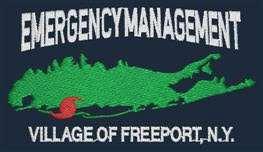
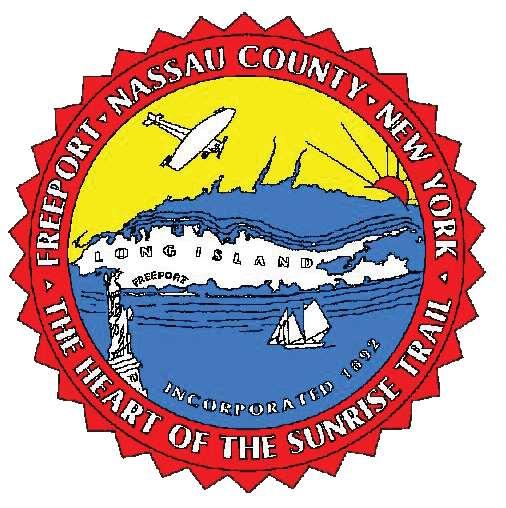

2023 EMO Brochure





































